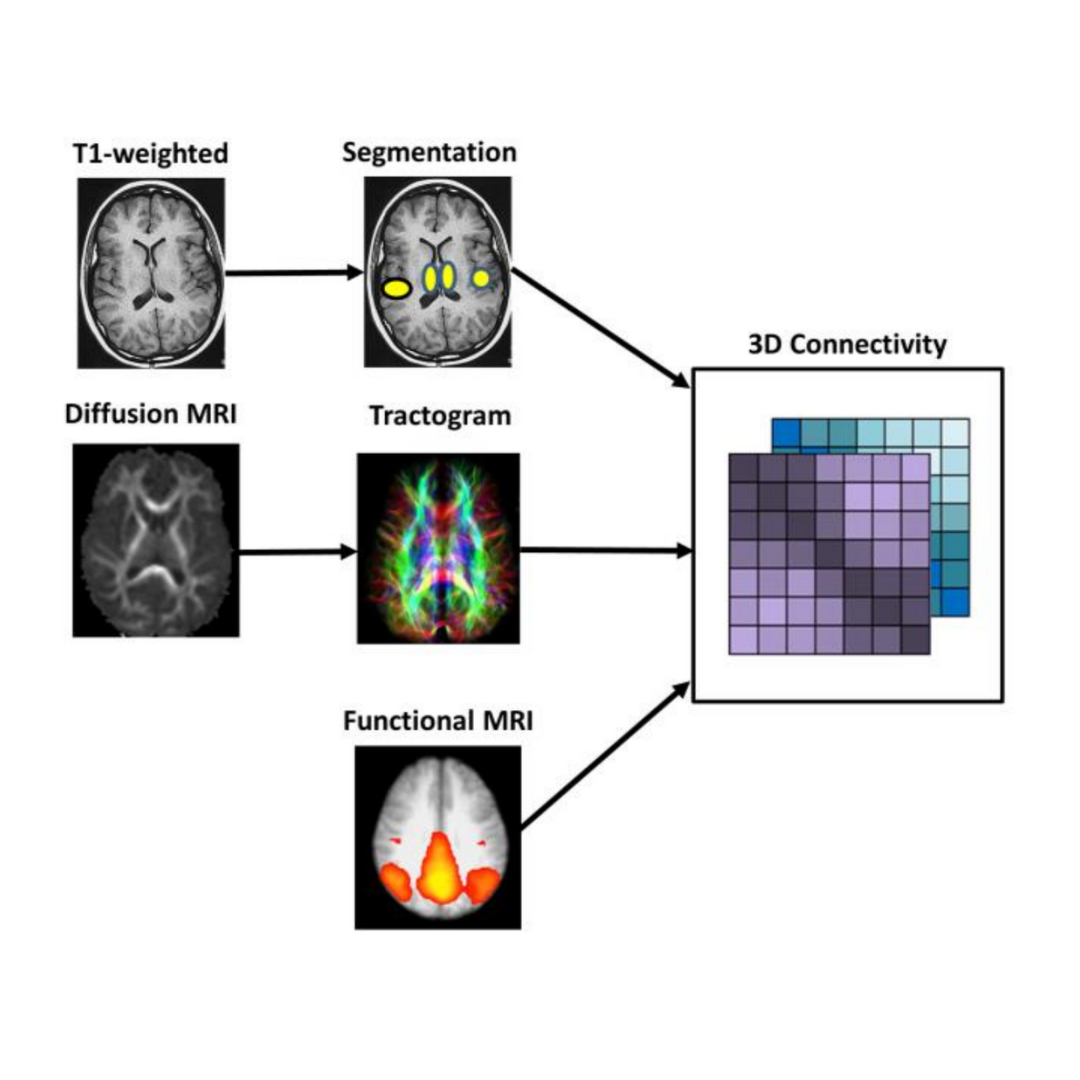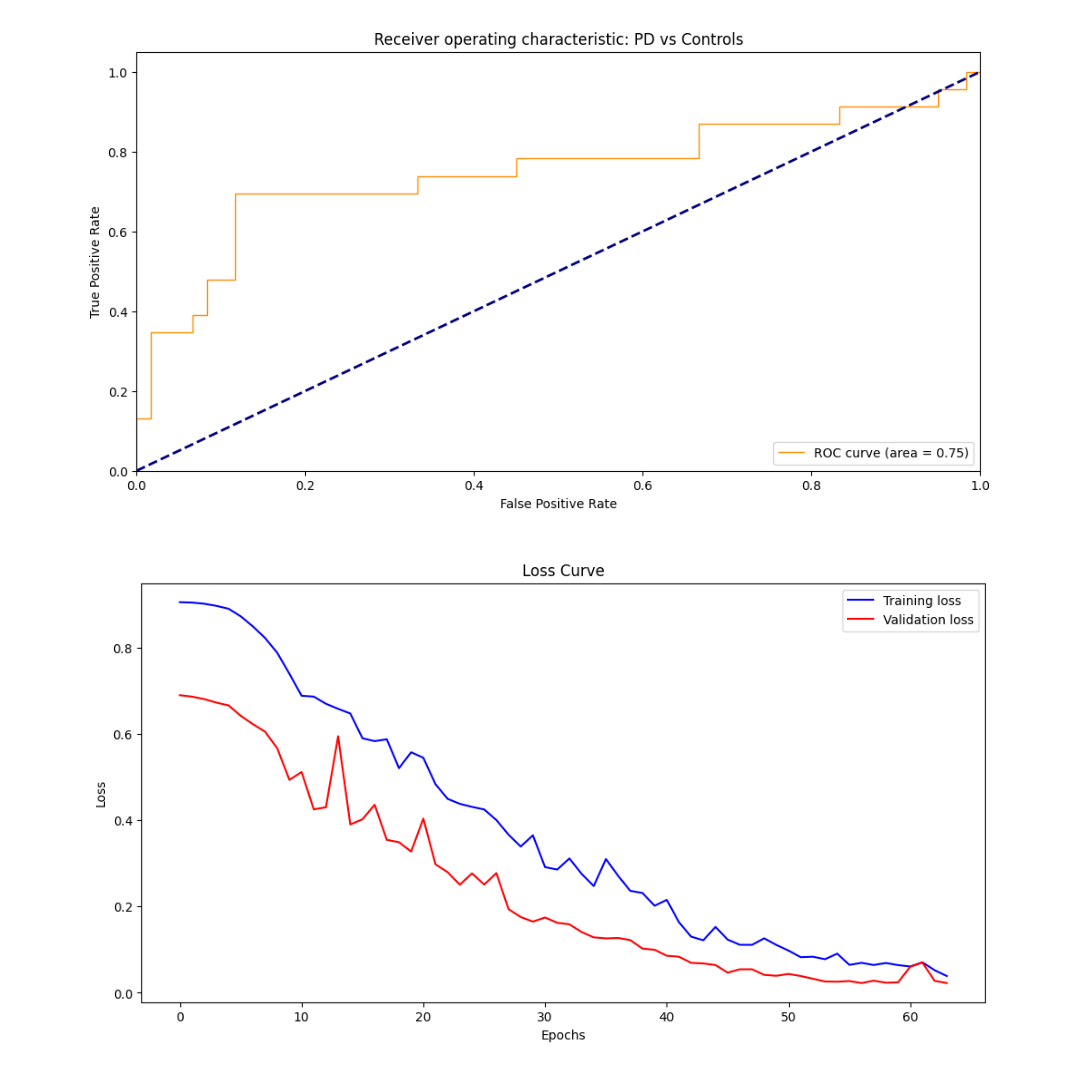Category: Parkinson's Disease: Neuroimaging
Objective: To develop a novel artificial intelligence (AI) model using connectivity matrices derived from multi-modal brain magnetic resonance imaging (MRI) to aid diagnosis and subtyping of Parkinson’s disease (PD).
Background: Diagnosis of PD remains challenging: early PD symptoms are subtle and overlap with those of other neurological conditions. Current diagnostic tests cannot accurately diagnose early PD [1] or differentiate its subtypes, e.g. tremor-dominant (TD) or postural-instability-gait-disorder (PIGD). Lack of objective, reliable markers contribute to low diagnostic accuracy rates (38-65%) [2, 3]. Previous AI studies suggest that brain connectivity may be useful as a marker in early PD diagnosis and subtyping [4].
Method: MRI datasets from early PD patients and controls (n=225) were included from the UK Biobank and PPMI. Included subjects had diffusion, functional, and T1-weighted MRI data. MRI data were denoised, corrected for distortions, normalized, and segmented to estimate diffusion parameters, tractography, and functional connectivity. 3D matrices were generated, representing multi-modal macroscopic connectomes. A supervised deep-learning CNN was trained to differentiate PD from controls using topographic information from neighbouring edges of the connectomes (Fig 1), validated in one-third of the data (46:20:33 for training:validation:testing). A similar model was used for TD vs. PIGD subtyping (n=123)[5]. To improve generalizability, training data was augmented 4-fold with Gaussian noise.
Results: We included 82 individuals (aged 60±5 years,37.5% female) from the UK Biobank, and 143 (aged 60±10,32.9% female) from PPMI. The PD vs. control model achieved good classification performance (accuracy=79.5%,AUC=74.8%,specificity=80-90%,sensitivity=34.8-56.5%;Fig 2). The subtype model achieved moderate performance (accuracy=85.4%,AUC=56.7%,specificity=64-94.4%,sensitivity=0-40%).
Conclusion: Using a novel multi-modal connectomic approach, our AI model classified PD and controls with good specificity but poor sensitivity, indicating a low likelihood of missing a true PD diagnosis, but moderate likelihood of falsely classifying a control as PD. Our model could not differentiate PGID and TD subtypes.We aim to enhance model performance by expanding the data (n=500), optimizing parameters, and analyzing misclassified cases. Future advancements of the model could improve confidence in PD diagnosis and subtyping.
Figure 1. Simplified image analysis pipeline
Figure 2. ROC and Loss Curves, PD vs Controls
References: 1. Tolosa, E., et al., Challenges in the diagnosis of Parkinson’s disease. The Lancet Neurology, 2021. 20(5): p. 385-397.
2. Beach, T.G. and C.H. Adler, Importance of low diagnostic accuracy for early Parkinson’s disease. Movement Disorders, 2018. 33(10): p. 1551-1554.
3. Lee, J.W. and Y.S. Song, Alteration of tremor dominant and postural instability gait difficulty subtypes during the progression of Parkinson’s disease: analysis of the PPMI cohort. Frontiers in neurology, 2019. 10: p. 455649.
4. Raval, S., R. Balar, and V. Patel. A Comparative Study of Early Detection of Parkinson’s Disease using Machine Learning Techniques. in 2020 4th international conference on trends in electronics and informatics (ICOEI)(48184). 2020. IEEE.
5. Stebbins, G.T., et al., How to identify tremor dominant and postural instability/gait difficulty groups with the movement disorder society unified Parkinson’s disease rating scale: comparison with the unified Parkinson’s disease rating scale. Movement Disorders, 2013. 28(5): p. 668-670.
To cite this abstract in AMA style:
T. Teo, T. Welton. Classification of Parkinson’s disease using AI based on multi-modal brain MRI connectomics [abstract]. Mov Disord. 2024; 39 (suppl 1). https://www.mdsabstracts.org/abstract/classification-of-parkinsons-disease-using-ai-based-on-multi-modal-brain-mri-connectomics/. Accessed December 13, 2025.« Back to 2024 International Congress
MDS Abstracts - https://www.mdsabstracts.org/abstract/classification-of-parkinsons-disease-using-ai-based-on-multi-modal-brain-mri-connectomics/


